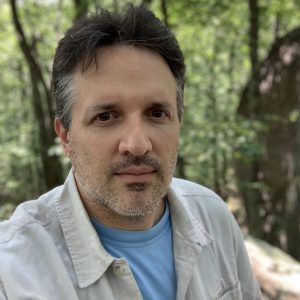Ed Cook was just a boy when he fell in love with the Bath County farm he now owns. Back then, the property belonged to Mr. and Mrs. Law, who had owned it for 50 years. The young Cook admired the land and dreamed of one day owning a property like it.
In 1949, he went into the military and spent three years as a soldier in Korea. He was wounded and spent 28 months in an Army hospital. While there he saved his money, and when he got out of the hospital and returned home, he went to visit Mr. and Mrs. Law. Mr. Law had passed away. “I told Mrs. Law I was interested in buying her farm, which she agreed to,” Mr. Cook recalls. “I purchased the farm in 1956 and moved my mother and father in with me.” He has lived there ever since, adding to the acreage and bringing it to 315 acres today. “With the streams running through it and rolling hills and flat land for my cattle to roam, I couldn’t have asked for more,” he says.
Mr. Cook watched as the land around him—nestled in a beautiful stream valley deep in the George Washington National Forest—was gradually developed. Twenty-five acres of land adjoining his farm was subdivided into 11 different homes, cabins, and camps, which brought more roads and traffic. Despite posting his property, he had problems with trespassing hunters and four-wheelers.
In making his estate plans, he realized that the beauty and natural resources of his farm could similarly be degraded by future development. With the help of his attorney, he sought options for making sure that this land remained a farm forever. The Virginia Outdoors Foundation stepped in to help and learned that the cost associated with completing a conservation easement would be a challenge for Mr. Cook.
The Valley Conservation Council, one of VOF’s long-time partners, was asked to help and was able to arrange assistance from an anonymous donor. In July 2012 Mr. Cook brought an easement proposal before the VOF board, and in October the easement was recorded.
The easement permanently protects productive farm and forest land by prohibiting division and limiting future development. It also protects robust wildlife habitat and extensive frontage on Back Creek, a popular native trout stream and possible home to a threatened species of shiner (the Virginia Division of Natural Heritage reports a 50-50 chance that the shiner can still be found in the stream). Back Creek flows through the property for close to two miles, goes through the pass at O’Roarke Draft, and then through the Blowing Springs campground, which is a favorite destination for trout anglers. The easement protects the stream with a 35-foot no-plow buffer.
The farm is rich with other conservation values, too. It is adjacent to George Washington National Forest lands on both the east and west boundaries for a total of 2.6 miles, providing a green connection between two tracts of public land. About two-thirds of the soil is classified as agricultural “Soils of Statewide Importance” and “Prime Soils” by the U.S. Department of Agriculture’s Natural Resources Conservation Service. The property is visible from both State Route 600 and the Bogen Run public hiking trail. It also lies with the National Audubon Society’s Allegheny Highlands Important Bird Area.
Mr. Cook is happy knowing that the VOF easement will protect his land long after he is gone. “This land has been my life’s dream and I worked hard to obtain it,” he says. “I love this land and don’t want it to change.”
This article includes portions of an earlier piece by the Valley Conservation Council.
